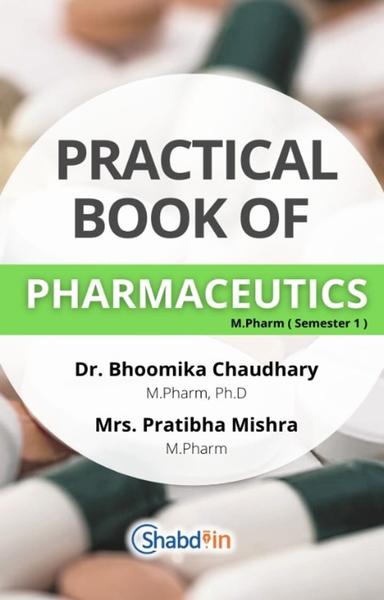AIM: To prepare and evaluate Mucoadhesive Tablet of given drug (Diclofenac sodium).
REQUIREMENT:
Apparatus: Beaker, stirrer, morter and pastel, compression machine (CIP).
Chemicals: Diclofenac sodium, Xanthan gum, HPMC, Lactose, Aerosol (colloidal silica dioxide), Magnesium stearate
REFERENCE:
M.V. Raman, C.Nagda, M.HimjaResearch paper on design and evaluation on mucoadhesive buccal delivery(Indian journal of pharmaceutical science):2004:Pg.no.1-13
THEORY:
Mucoadhesion is commonly defined as the adhesion between two materials, at least one of which is a mucosal surface. Mucoadhesive dosage forms may be designed to enable prolonged retention at the site of application. Mucoadhesion has shown renewed interest for prolonging the residence time of mucoadhesive dosage forms through various mucosal routes in drug delivery applications.
Mucoadhesive-based topical and local systems have shown enhanced bioavailability. Mucoadhesive drug delivery gives rapid absorption and good bioavailability due to its considerable surface area and high blood flow. Mucoadhesive polymers have numerous hydrophilic groups, such as hydroxyl, carboxyl, amide, and sulphate. These groups attach to mucus or the cell membrane by various interactions such as hydrogen bonding and hydrophobic or electrostatic interactions.
Advantages:
1) Rapid absorption because of enormous blood supply and good blood flow rate
2) Improved patient compliance
Disadvantages:
Eating and drinking is prohibited 2) Occurrence of local ulcerous effect due to prolonged contact of the drug possessingulcer genic property.Mechanism of Mucoadhesion:
The mechanism of Mucoadhesion is generally divided into two steps: the contact stage and the consolidation stage. The first stage is characterized by the contact between the mucoadhesive and the mucus membrane, with spreading and swelling of the formulation, initiating its deep contact with the mucus layer. In the consolidation step, the mucoadhesive materials are activated by the presence of moisture. Moisture plasticizes the system, allowing the mucoadhesive molecules to break free and to link up by weak van der Waals and hydrogen bonds. Essentially, there are two theories explaining the consolidation step: the diffusion theory and the dehydration theory. According to the diffusion theory, the mucoadhesive molecules and the glycoproteins of the mucus mutually interact by means of interpenetration of their chains and the building of secondary bonds. For this to take place, the mucoadhesive device has features favouring both chemical and mechanical interactions. For example, molecules with hydrogen bond building groups (–OH, –COOH), an anionic surface charge, high molecular weight, flexible chains and surface-active properties, which help in spreading throughout the mucus layer, can present mucoadhesive properties. Polymers Used in the Mucoadhesive Drug Delivery System :
The bio adhesive polymers can be broadly classified into two groups, namely specific and non-specific. The specific bioadhesive polymers (e.g., lectins, fimbrin) have the ability to adhere to specific chemical structures within the biological molecules while the non-specific bioadhesive polymers (e.g., poly(acrylic acid), cyanoacrylates) have the ability to bind with both the cell surfaces and the mucosal layer.The use of mucoadhesive polymers for the development of pharmaceutical formulations dates back to 1947, when attempts were made to formulate a penicillin drug-delivery system for delivering the bioactive agent to the oral mucosa using gum tragacanth and dental adhesive powders . Improved results were reported when carboxymethylcellulose and petrolatum were used for the development of the formulation. Subsequent research resulted in the development of a mucoadhesive delivery vehicle which consisted of finely ground sodium carboxy methylcellulose(SCMC), pectin and gelatin. The formulation was later marketed as Orahesive®. Another formulation which entered into the clinical trials is Orabase®, which is a blend of polymethylene/mineral oil base. This was followed by the development of a system where a polyethylene sheet was laminated with a blend of sodium carboxymethyl cellulose and polyisobutylene which provided an added advantage of protecting the mucoadhesive layer by the polyethylene backing from the physical interference of the external environment.
Over the years, various other polymers (e.g., sodium alginate, sodium carboxymethylcellulose, guar gum, hydroxyethyl cellulose, karya gum, methylcellulose ,poly(ethylene glycol) (PEG), retene and tragacanth) have been found to exhibit mucoadhesive properties. During the 1980s poly(acrylic acid), hydroxypropylcellulose and sodium carboxymethyl cellulose were widely explored for the development of formulations having mucoadhesive properties. Since then the use of acrylate polymers for the development of mucoadhesive formulations have increased manifold,
various authors have investigated the mucoadhesive properties of different polymers with varying molecular architecture.
Evaluation Parameter Used For Mucoadhesive Drug Delivery System
[A] IN VITRO METHODS:
1. Tensile strength measurement.
2. Shear strength measurement.
3. Modified physical balance.
4. Detachment force method.
5. Microbalance method.
6. Ex – vivo Mucoadhesion.
7. Falling film method.
8. Swelling index.
9. Wash off method.
10.Colloidal gold staining.
11.Adhesion number.
12.Viscometric method.
13.Everted sac technique.
14.Drug permeation.
15.Fluorescent probe method.
16.Mucoadhesion time.
17.Surface pH study.
18.Scanning Electron microscopy. (SEM)
19.Novel Rheological Approach.
20.Texture analyzer.
[B] IN VIVO METHODS
1. Use of radioisotopes.
2. Use of gamma scientigraphy.
3. X-ray studies
4. In vivo evaluation of mucoadhesive studies
5. Isolated loop technique.
1. Tensile Strength Measurement
WILHELMY PLATE TECHNIQUE: The Wilhelm plate technique is traditionally used for the measurement of dynamic contact angles. The instrument measures the bio adhesive force between mucosal tissue and the dosage form. By using the CAHN software system, parameters such as fracture strength, deformation to failure and work of adhesion can be analysed.
Fracture strength: It is the maximum force per unit surface area required to break the adhesive bond. Deformation to failure: It is the distance required to move the stage before complete separation occurs. This parameter is dependent on the material stiffness and the intensity of strength of adhesion. Work of adhesion: It is a function of both the fracture strength and the deformation to failure. It tends to be the strongest indicator of the mucoadhesive potential.
Method:
A small glass plate (2×5cm) was coated with 1% w/v of the mucoadhesive agent. The mucus gel was taken from goat intestine kept in a suitable container, where the above mentioned glass plate can be kept in contact with gel in a balanced condition and the temperature was maintain at30°C. Nylon thread was attached at one end of the glass plate. Provision was given to raise the weight at the other end .At specified intervals, weight was added to detach the coated glass plate from gel and the force required to pull the plate out of the gel was determined under experimental condition. Six plates were tested for each material and the average weights required were calculated.
Shear Stress Measurement:
The shear stress measures the force that causes a mucoadhesive to slide with respect to the mucus layer in a direction parallel to their place of contact of adhesion.
PRINCIPLE: Adhesion tests based on the shear stress measurement involve two glass slides coated with polymer and a film of mucous. Mucous forms a thin film between the two polymer coated slides, and the test measures the force required to separate the two Surfaces.
Method: Two smooth, polished plexi glass box were selected; one block was fixed with adhesive araldite on a glass plate, which was fixed on levelled table. The level was adjusted with the spirit level. To the upper block, a thread was tied and the thread was passed down through a pulley. At the end of the thread a pan was attached into which the weights can be added.
Detachment Force Method:
This method is based on the evaluation of mucoadhesive strength, i.e. the force required to break the binding between the model membrane and the mucoadhesive. Depending on the direction in which the mucoadhesive is separated from the substrate, it is possible to obtain the detachment, shear, and rupture tensile strengths.
Method:
To characterize the mucoadhesive strength, the detachment force method was used. Mouth of a glass vial fixed with a fresh section of animal tissue from fundus portion of goat intestine, facing mucosal side out and kept in simulated gastric fluid (pH 1.2) without pepsin. Kept another portion of mucus side of exposed tissue over a rubber stopper and secured with an aluminium cap .The mucoadhesive tablet placed on the exposed mucous layer is kept in contact with the former tissue which is connected with a pan in which the weight can be raised. At specific intervals, applied weight and the force required to detach was measured to determine mucoadhesive strength.
Swelling Index:
Swelling of excipients of mucoadhesive dosage form involves the absorption of a liquid resulting in an increase in weight and volume. Liquid uptake by the particle may be due to saturation of capillary spaces within the particles or hydration of macromolecule. The liquid enters the particles through pores and bind to large molecule, breaking the hydrogen bond and resulting in the swelling of particle. The extent of swelling can be measured in terms of% weight gain by the mucoadhesive dosage form.
Method:
One mucoadhesive dosage form is weighed and placed in a beaker containing 200 ml of buffer media. After each interval the dosage form is removed from beaker and weighed again up to 8 hours. The swelling index is calculated using following formula.
Swelling Index (S.I.) = (Wt-Wo)/Wo
Where, S.I. = Swelling index
Wt = Weight of the dosage form at time t
Wo = Weight of the dosage form before placing in the beaker.
Surface pH Study:
The surface pH of the buccal tablets are determined in order to investigate the possibility of any side effects in vivo. As an acidic or alkaline pH may cause irritation to the buccal mucosa. The method adopted, is used to determine the surface pH of the tablet. A combined glass electrode is used for this purpose. The tablet is allowed to swell by keeping it in contact with 1 mL of distilled water (pH 6.5 ±0.05) for 2 hours at room temperature. The pH is measured by bringing the electrode in contact with the surface of the tablet and allowing it to equilibrate for 1 minute.
Formulation TABLE:
SR.NO | INGREDIENTS | F1 | F2 | F3 | CATEGORY |
1 | Diclofenac sodium | | | | |
2 | Xanthan gum | | | | |
3 | HPMC | | | | |
4 | Lactose | | | | |
5 | Aerosol (colloidal silica dioxide) | | | | |
6 | Magnesium stearate | | | | |
Procedure:
Weigh all the ingredient accurately.Passed all the through sieve 16#. Mix Diclofenac sodium, Xanthan gum, HPMC, Lactose, Aerosol (colloidal silica dioxide) properly.Before direct compression add Mg. Stearate.Then go for direct compression.Floating Drug Delivery System
Result:
Remark:
Practical Performance (2) | Conduct in Lab (2) | Journal (2) | Observations and Results (2) | Viva-Voce (2) | Total (10) | Signature of Faculty In charge |
| | | | | | |
Observation Table:
TABLE I: Absorbance of …………. at ______ nm and _____ nm.
Conc (ug/ml) | Abs at ____nm | Abs at ____nm | Absorptivity at ____ nm (ax1) | Absorptivity at ____ nm (ax2) |
| | | | |
| | | | |
| | | | |
| | | | |
| | | | |
| | | | |
| | | | |
TABLE II: Absorbance of at ______ nm and _____ nm.
Conc (ug/ml) | Abs at ____nm | Abs at ____nm | Absorptivity at ____ nm (ay1) | Absorptivity at ____ nm (ay2) |
| | | | |
| | | | |
| | | | |
| | | | |
| | | | |
| | | | |
Table III: Standard Mixtures
Conc (ug/ml) | Abs at ____nm (A1) | Abs at ____nm( A2) |
| | |
| | |
| | |
| | |
| | |
EXPERIMENT NO: 16








